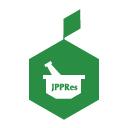Microbial and physicochemical assays of paracetamol in different brands of analgesic syrups sold in Sana’a City-Yemen | Ensayos microbiológicos y físico-químicos de paracetamol en diferentes marcas de jarabes analgésicos vendidos en la ciudad de Sana’a, Yemen
Journal of Pharmacy & Pharmacognosy Research, 3 (1):
6-12 (February 2015)Abstract
Context: Contamination of pharmaceuticals with microorganisms irrespective whether they are harmful or nonpathogenic can bring about changes in physicochemical characteristics of the drugs.
Aims: To assay the microbial and physicochemical characteristics of paracetamol of two hundreds samples of different brands of analgesic syrups sold in Sana’a City, Yemen.
Methods: Total viable aerobic count, type of isolated microorganisms, physical properties, and content of active ingredients were identified and evaluated by standard methods and techniques. The SPSS program was used to statistical analysis of variance for results obtained.
Results: The total bacterial count of <10 CFU/mL and <100 CFU/mL in 179 (89.5%) and 21 (10.5%) samples, respectively was recorded, while the total fungal count was ≤10 CFU/mL in all analyzed syrup samples. The isolated bacteria were Bacillus subtilis, Micrococcus fulvum, and Staphylococcus epidermidis while isolated fungi were Aspergillus niger, Aspergillus fumigatus, and Penicillium notatum. Bacillus subtilis and Aspergillus niger were the predominant bacteria and fungi isolated. The color results had a light red liquid with a sweet taste in the analyzed analgesic syrups. The pH values were ranged from 4.44–5.88. However, the density fluctuated from 1.149–1.184 g/mL. The paracetamol concentration as an active ingredient in the analgesic syrup was recorded from 98.19% – 106.53%.
Conclusions: This finding showed that all analgesic syrups sold in Sana’a City followed Pharmacopeia specifications on microbial and physicochemical qualities.
